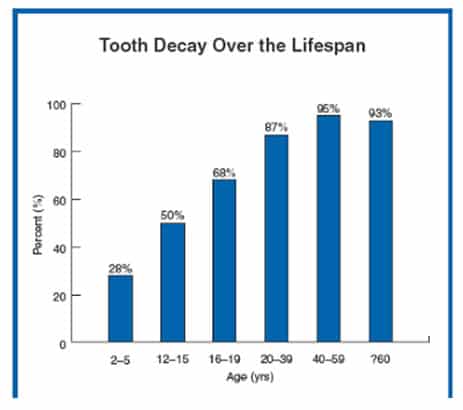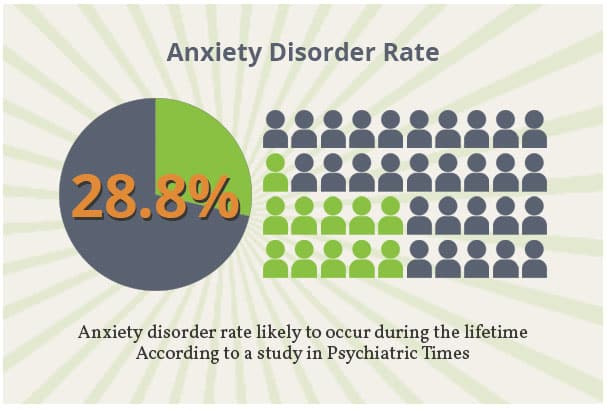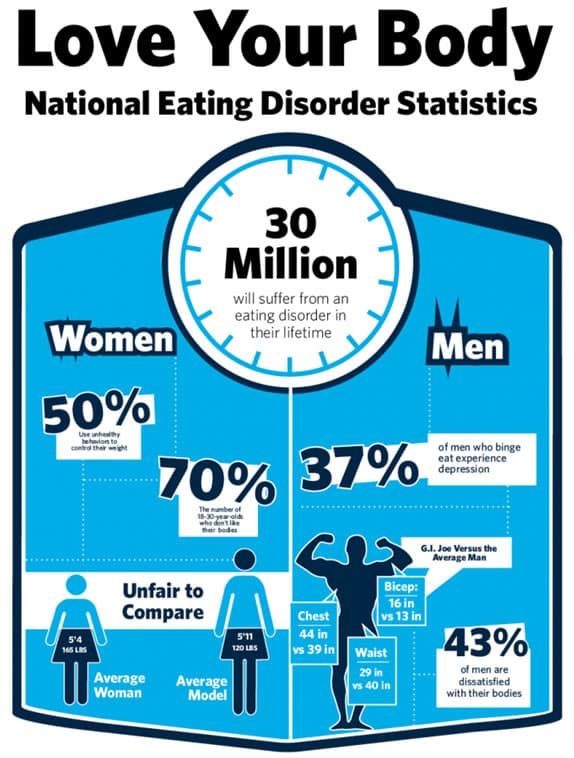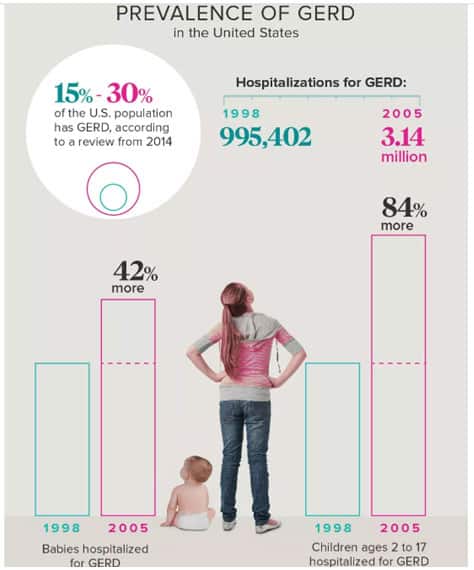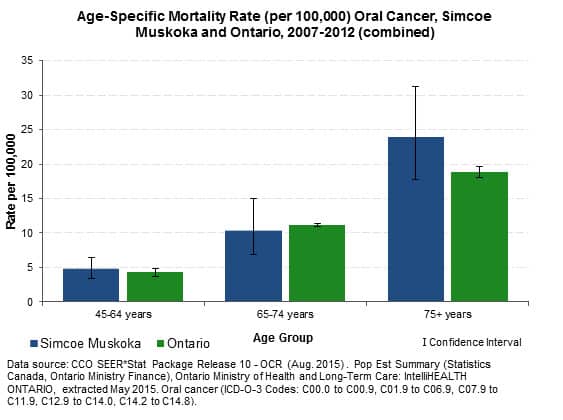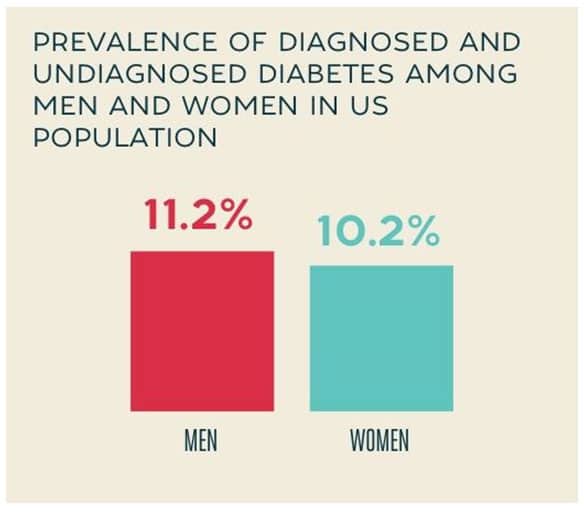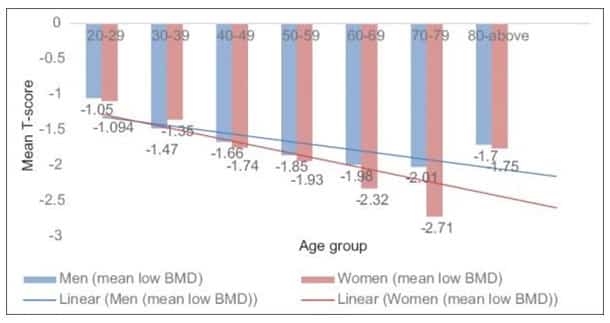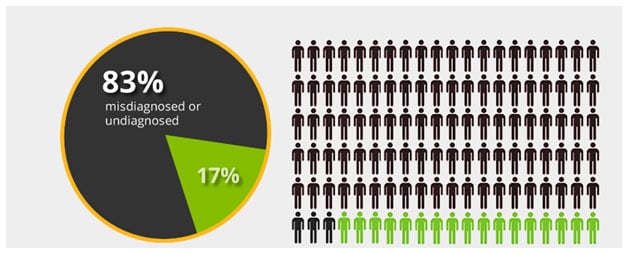In 2016, a study carried out by The Global Burden of Disease revealed that half of the world’s population; about 3.58 billion people were afflicted with tooth decays.
What’s more, another research embarked on in the United States by the Center for Disease Control showed that 95% of adults between the ages of 40 to 59 were experiencing some sort of teeth decay.
And 87% of adults from the age of 20 to 39 also had issues with tooth decays.
This shows how widespread wide tooth decays are. However, what most people aren’t aware of is that there are certain common diseases that are responsible for tooth decay.
Below are a few of them and their treatments:
1. Anxiety Disorder
Recent data has shown that Anxiety disorders are amongst the most common mental diseases in the United States. Over 40 million adults from the age of 18 or literally 18.1% of the entire population suffer from this illness.
What’s more? 28.7% of people in the States are likely to have an anxiety disorder in their lifetime.
That’s insane! But what’s even more shocking is that they can lead to tooth decay.
Basically, when a person who is affiliated with this disorder is experiencing an attack they begin to clench or grind their teeth, which is a sin most people exhibit when under pressure.
Now, as time passes, this grinding and clenching will damage your teeth and start causing pain and extreme sensitivity.
What’s more? You also can experience a fracture on your teeth, all these lead to tooth decay when not properly manage.
Treatments
Cognitive-behavioral therapy is a very commonly used method to treat anxiety disorders.
CBT has proved that it’s extremely effective in handling and treating social anxiety disorder, panic disorder, generalized anxiety disorder, and phobias.
2. Eating Disorders
Studies from the National Eating Disorder Group has shown that 30 million in people will sometime in their lifetime have an eating disorder.
However, the problems go beyond just the trials of ED, a Dentist can spot signs of bulimia and anorexia in patients. This is because, with anorexia, the body is faced with nutritional deficiencies such as B vitamins, calcium, and iron.
And the lack of these nutrients is responsible for tooth decay, dry mouth, and gum disease. This is based on studies carried out by the National Eating Disorders Association.
Furthermore, when it comes to Bulimia, due to the constant vomiting of food, stomach acid begins to erode the enamel of the afflicted person’s teeth, which affects the shape and color of the teeth as well as heightens sensitivity to cold or hot food.
This can even lead to teeth breakage as the teeth become very weak due to decay.
Treatment
ED treatment is hinged on the specific disorder as well as the symptoms that came alongside it.
Most times, however, it involves a mixture of nutrition education, psychological therapy, medical monitoring, and certain medications.
3. Gastroesophageal Reflux Disease
According to a 2014 survey of between 15 to 30% of the United States population is challenged with Gastroesophageal Reflux Disease, which is a very serious form of Acid Reflux.
This is quite a deadly disease because of its silent nature. However, it can be identified by a stubborn case of halitosis, which involves bad breath. If ignored though, with time, GERD starts to eat away your teeth.
Treatment
There are various treatments to Acid Reflux, such as the introduction of stomach neutralization antacids, and medications that restrict the production of acids as well as repair the esophagus.
4. Oral Cancer
Oral cancer is a very common but deadly disease when not discovered on time. As a matter of fact, studies have shown that seniors are the worst hit and have the highest mortality rate with regards to oral cancer.
Now, one of the major signs of oral cancer asides from gum pain, sores, liaisons, etc. is tooth decay.
This is why regular dental checkup is necessary, as a dentist can easily identify when tooth decay or oral challenge goes beyond just that and is oral cancer.
Treatment
When a dentist obtains a positive diagnosis of oral cancer, he/she will most likely recommend a biopsy of the infected area and then go further to suggest chemotherapy and radiation.
5. Type 2 Diabetes
Type 2 Diabetes can cause tooth decay; in fact, it heightens the occurrences of tooth decay. Tooth Decay is a periodontal disease that affects a lot of Americans.
It might interest you to know that 11.2% of men and 10.2% of women in the United States suffer from type 2 diabetes.
People with diabetes are three times more susceptible to have tooth decay than people who do not have it. This is because they have high sugar concentration in the blood and this causes an increase in the build-up of the plague.
When the plaque builds up for a long time, it will cause the teeth to begin to affect the health of the gums and this can result in the decay of the tooth.
When this tooth problem is not treated properly, it will increase the blood sugar level and makes the blood sugar level hard to control. But if the gum disease is quickly treated, it can help to control the blood sugar level.
If the periodontal disease that arises from diabetes is not quickly treated, it can damage soft tissues and even destroy the bone supporting the teeth.
Gum decay in people with diabetes is often indicated by swelling of the gums, bleeding, and constant infection or abscess in the gum.
Treatment
Constantly brush and floss your teeth to prevent the build-up of the plague. Ensure that the toothpaste you use contains fluoride this will control the build-up of plague.
If you don’t brush regularly, the plaque will build up and harden and then turn into tartar and this is hard to get off.
Also, use floss or an interproximal cleaning devices that are recommended to you by the dentist. Flossing will get rid of plague and dirt in between the teeth where your toothbrush won’t be able to reach.
6. Low Bone Mineral Density
Low bone mineral density can cause the teeth to get loose and to decay and also cause the gum to recede.
Furthermore, people with low bone mineral density related disease such as osteoporosis are more likely to have tooth decay and tooth loss.
Such people prone to low bone mineral density; include males between the ages of 30 to 39 and women. If you fall in this category you may want to check the cause of your teeth decay before dismissing it.
The mineral density of the teeth is needed for the teeth to stay healthy, once this mineral is depleted, the teeth begin to suffer wear and tear and also decay.
Treatment
To control tooth decay that arises as a result of low mineral density, the mineral density of the bone needs to be boosted.
Dental x-rays can also be conducted to ascertain the exact cause of the decay if it is linked to osteoporosis, your dentist will prescribe some medications and then refer you to a bone disease specialist.
7. Autoimmune Disease
Autoimmune disease such as Sjogren’s syndrome, are popular among women that are over the age of 40. Furthermore, recent research has shown 5 million men and 18 million women are suffering from AD.
And it often causes dryness in the mouth and can degenerate to Tooth Decay.
This Autoimmune disease attacks the salivary gland which is responsible for the production of saliva in the mouth.
When the glands are attacked, saliva production in the mouth becomes reduced as well as tears in the eyes which leads to the dryness of the mouth and eyes.
The dryness that arises from autoimmune diseases affects the health of the teeth and causes the teeth to begin to decay
Treatment
There is no known cure for Sjogren’s syndrome. But there are drugs that can be taken to restore some moisture to the mouth. Consult your doctor and only take the drugs that are prescribed to you.
8. Celiac Disease
Celiac disease is an autoimmune disease that occurs when gluten damages the small intestine and over 83% of Americans are misdiagnosed due to the salient nature of the disease.
Even though this is a gastrointestinal problem, celiac disease has side effects that affect the teeth.
This effect on the teeth is always evident in the discoloration of the affected tooth (brown, white or yellow spots appear on the teeth). It also causes a defect in the enamel of the teeth.
The affected tooth also begins to appear pitted or banded (i.e. grooves appear across the teeth). Other obvious oral and dental symptoms of celiac disease are dry mouths, red and extremely smooth tongues, and recurring canker sore.
Treatment
Visit a dentist regularly to quickly identify celiac disease and to get the right prescription of Medicine that can combat it.
You can also go for a routine medical check-up so that any issue with your gastrointestinal system will be quickly identified and handled before it degenerates into celiac disease.
Conclusion
The data is behind it and all the stats prove that sometimes tooth decays are a result of certain common diseases.
Hence, it’s vital to always ensure you’re up to date with your dental checkups and don’t take any symptoms for granted.


